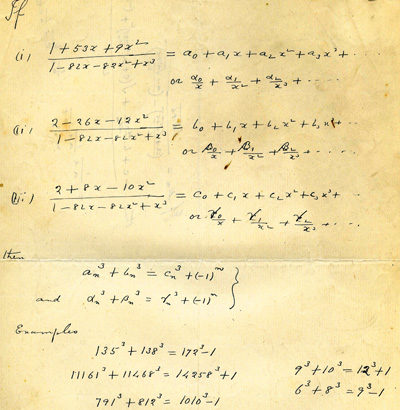This was another pleasant surprise kids. Did I tell you that I went looking for his house in chennai last year? And found it? It was just a normal house. Perhaps I was reading too much into it. Or was hoping to see some plaques or something but nothing. Maybe that's the right metaphor. India has these brilliant people but they aren't recognised at all. The man was brilliant and his work is still being recognised in amazing ways. That's one of my regrets. That I'm not able to spend more time doing mathematics. So much to learn and so little time. It's so much fun doing maths. Specially when you're trying to derive things. Pure mathematics was beyond me though. This was more applied maths that I liked. I couldn't get my head around the pure abstract thinking that pure mathematics requires. But I'm happy both of you like mathematics. It's fun and games.
Anyway read and admire kids :)
Ramanujan surprises again | plus.maths.org
https://plus.maths.org/content/ramanujan
(via Instapaper)

A box of manuscripts and three notebooks. That's all that's left of the work of Srinivasa Ramanujan, an Indian mathematician who lived his remarkable but short life around the beginning of the twentieth century. Yet, that small stash of mathematical legacy still yields surprises. Two mathematicians of Emory University, Ken Ono and Sarah Trebat-Leder, have recently made a fascinating discovery within its yellowed pages. It shows that Ramanujan was further ahead of his time than anyone had expected, and provides a beautiful link between several milestones in the history of mathematics. And it all goes back to the innocuous-looking number 1729.
Ramanujan's story is as inspiring as it is tragic. Born in 1887 in a small village around 400 km from Madras (now Chennai), Ramanujan developed a passion for mathematics at a young age, but had to pursue it mostly alone and in poverty. Until, in 1913, he decided to write a letter to the famous Cambridge number theorist G.H. Hardy.
No comments:
Post a Comment